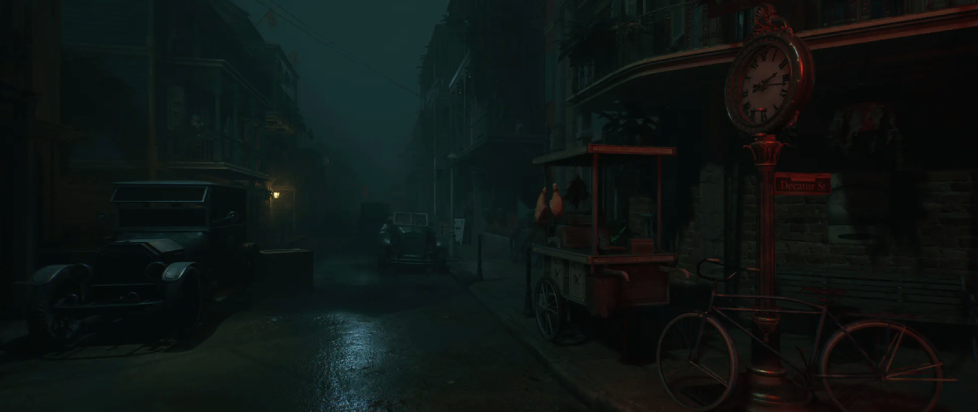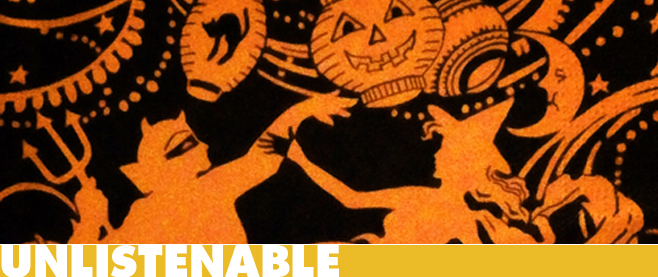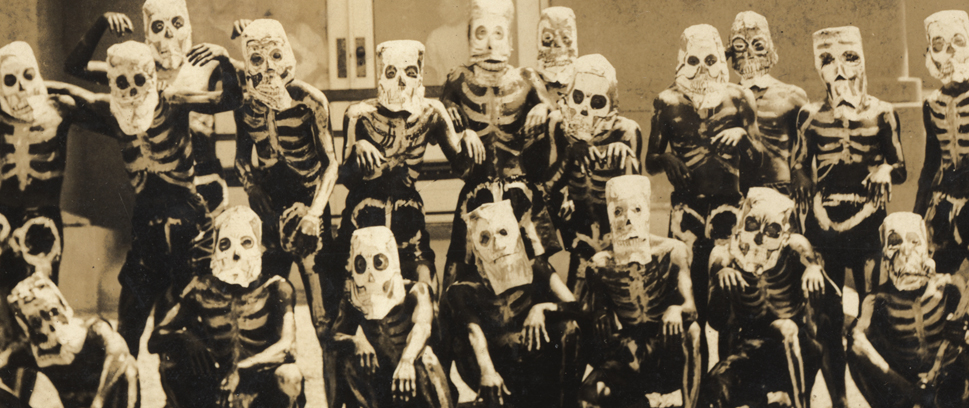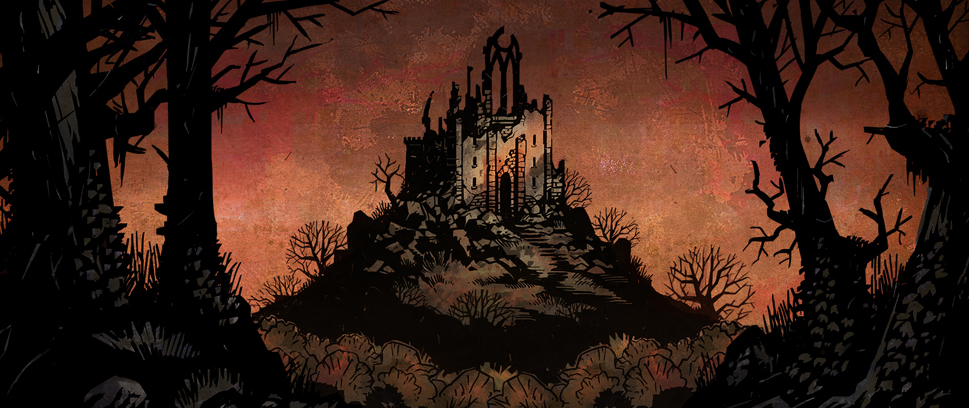
Rebuilding Derceto with Alone in the Dark’s Developers
It’s been a few good years for survival horror fans. A flurry of new and resurrected frights has covered the gaming landscape. Rising from the grave most delightfully is none other than Alone in the Dark. Despite being of the progenitors of the genre, the series had been left languishing since the divisive soft-reboot Alone in the Dark: Inferno and the derided Alone in the Dark: Illumination. So you can imagine everyone’s excited surprise when Pieces Interactive of Magicka 2 and Kill To Collect fame unveiled a full-scale reimagining of the original 90s Alone in the Dark trilogy. Many jaws hit the floor, followed shortly thereafter with a teaser demo centering on one of the side characters.
In the days leading up to the game’s release, I had the privilege of speaking with the team at Pieces Interactive, delving into how they performed the digital necromancy necessary to revitalize one of gaming’s most important, yet troubled, horror franchises.
“Several of us were huge fans of the classic Alone in the Dark games,” explains Robert Lazic, Alone in the Dark’s Managing Director. “As we closed in on the end phase of Titan Quest: Atlantis, management at Pieces discussed where we wanted to go next. We believed that it was time for Pieces to do something bigger, so we set to work on a prototype.” While a beloved IP, the series was treacherous territory to pitch, especially given Eden Games’ ill-fated PS3 Alone in the Dark remake under Atari. Regardless, Pieces pitched their prototype to THQ Nordic. With a proven track record, most recently reviving the Titan Quest games, Pieces Interactive was given the greenlight.
“We’re excited to bring it back. As you know,” explains Andreas Schmiedecker, Project Producer from THQ Nordic, “Alone in the Dark predates other popular survival horror franchises, establishing many of the genre’s conventions. We think that grounding our re-imagination in the classic games is also what makes our love-letter to the series so unique.” When asked which is his favorite, Schmiedecker is torn, “While we stuck to the classic entries for inspiration, they are certainly different from what modern sensibilities would expect. I do have a little sweet spot for Inferno, mainly for its ambitions.” Fittingly though, the one that wins out for him is last classic-inclined reimagining, “Personally, A New Nightmare is a favorite, since it struck a nerve when I was playing it while being way too young to play a horror game…” he grins wistfully at the thought.
“But if you think about remakes being successful lately, I think it’s not just horror games, but a general trend to make experiences from two or more console generations ago accessible to a new audience. Plus you give more seasoned gamers a chance to relive those nostalgic memories. Certainly, we (THQ Nordic) have done our fair share of those projects, such as Destroy All Humans, and upcoming titles like Disney Epic Mickey: Rebrushed or the Gothic 1 Remake.” Schmiedecker quickly clarifies, “And while Alone in the Dark is not a remake, we’re still hoping that both fans new and old enjoy our game.”
The task of weaving together this reimagining, both in story and design, would be no simple task. While the safe option would’ve been to just follow in the footsteps of Alone in the Dark’s modern peers, the team at Pieces Interactive wouldn’t settle for “good enough”. As the project’s Creative Director and Writer, Mikael Hedberg puts it, “The first game was a pioneering game. As much an artistic as it was a technical achievement – I remember the wow-factor of actually playing in 3D!”
Hedberg is no stranger to crafting harrowing tales, having written for Frictional Games’ Amnesia series and SOMA. Like with Frictional, Hedberg’s priority was to carve out as distinct a vision for Alone in the Dark today as it’d had back in 1992. As he says, “Simply continuing the legacy could have resulted in just another survival horror game of that genre we have come to know and love. So, to try to capture what makes Alone in the Dark special, we had to dig more into the specific elements – like the setting and the story – to set it apart, making it clear that this is a true Alone in the Dark game.”

For Hedberg, it was that roaring 1920s vibe of the original games that helped guide his writing. “I was most taken by the classic turn of the century horror story that was presented. I love how over the top it was, with so much of the fun Lovecraftian stuff I had been reading at the time. I knew I wanted to keep that feeling, but still try to have it be modern enough so it didn’t feel dated.
Plus, starting fresh by reimagining it meant that we could offer something new to everyone, even people who’d played the original.
It’s a combination of elements conveyed primarily through the audio and the visuals. Rather than surrealist, I think the baseline is more of a mysterious tone.” The heart of that mystery is Derceto, an old plantation outside of New Orleans, where the game is set. “We wanted the place to feel hot and humid, and uncertain. ‘Who knows what we’ll find?’ That’s the baseline. Then of course we careen into more unnerving places!” he laughs.
“The key thing I like to avoid when it comes to horror, and stories in general,” Hedberg explains, “is ‘anything goes.’ Everything that happens must follow the internal rules of the story. Even though we are in a haunted house, it can’t be haunted in the sense that we can just throw anything at the player. This doesn’t mean that everything should be spelled out as to why they happen. Strange things can still happen, but there needs to be a reason for it. I think audiences are smart enough to sense when a storyteller is just chucking everything at them and it feels a little insulting.”
Lazic echoes Hedberg wholeheartedly, “In the horror genre, it’s key to make everything feel grounded in the world you’re creating. How all details must feel as a natural part of the environment, no object is there purely by accident; it has its own story to tell.”
In lockstep with that aim for consistency, Pieces and THQ Nordic weren’t just going to swing for the fences, hoping they’d nailed the ambitions of the original game. They would invite the series’ creator, Frédérick Raynal to give his thoughts, ensuring his vision for survival horror would live on with the new team. As Schmiedecker recalls, “Frédérick and his team managed to create a true milestone in gaming history, so we were very honored to get his approval for our re-imagination. He was happy with what the team at Pieces have created and appreciated all the little nods to the original game.”
Though some modernizations are drawn from more recent horror games, particularly for combat and the over the shoulder camera, Schmiedecker emphasizes, “While many other games go more into the ‘terror’-part of survival horror, we see ourselves more in the tradition of psychological horror – and in that regard we’re lucky to have David Harbour and Jodie Comer on board, whose spellbinding performances make Hedberg’s writing sing.”

Another lesson Lazic cites is figuring out how to scare someone in a fun way. “It’s quite hard to know if something is scary or not when working so close to a project over a long period of time. The importance of having partners such as our publisher THQ Nordic, and external play-testers, helped us identify if something works or not. Having fresh eyes on your work is crucial, that can’t be overstated.” This would come full circle with the game’s announcement and corresponding Grace in the Dark teaser prologue – a free sample for fans, and a guaranteed vibe-check for the team. After years of work, would it all come together? Fortunately, yes.
“The reception to the prologue was great!” Schmiedecker explains, “Players loved the atmosphere, soundtrack, art direction, and storytelling. Obviously all those play a major role in the full game, we were happy to get the feeling we’re on the right track. While some key elements of the full game (such as combat and more complex puzzles) were missing from the prologue, they wouldn’t have made much sense for the story we wanted to tell. Still, it was great to get a feeling of the players’ reactions, hearing them be eager for more.”
While it’s been quite the journey, Lazic is certainly hungry for more scares on the horizon, saying, “I think that, during the development of Alone in the Dark, we’ve built quite the team, tailored well towards creating great horror adventure games. And on a personal level, I love to play these kinds of titles, so I’d welcome the opportunity to continue exploring the genre.”
As for Schmiedecker, he’s most eager to see players respond to the story, “and where it takes [them]. Though we start in Derceto, we take the players to a lot of strange places that, hopefully, surprise the player along the way. Definitely the Dark Man.” He also adds coyly, “And, of course, we’re extremely curious to see if the players find all the secrets, hidden cutscenes, all the nods to the original games, and… alternative endings.”
Speaking of alternatives, for all the horrors awaiting players in Derceto’s halls, one thing was certain at Pieces Interactive: developing the game itself would not be a nightmare. As Lazic explains, “At Pieces, we always strive to avoid overtime as much as possible so that the team members can have a good work-life balance. Granted, there will be times when we’re closing in on a certain milestone and we need to make an extra push. That said, delaying Alone in the Dark was a joint decision between our team at Pieces and THQ Nordic. We had an open, honest discussion about all aspects of the production. We all agreed that it’d be best for both the team and the game if we added some additional time to the project.”
As of this writing, Alone in the Dark has launched on time for all its platforms. While the critical reception has varied, the series fan reception has been warmer. After years of stumbling between reboots and spin-offs, Alone in the Dark is finally coming back into focus. Better yet, it’s evidence that a passion project, produced by a studio actively striving to avoid crunch, can stick the landing with their target audience. In the truly terrifying landscape of layoffs and studios struggling, who’d have thought that Alone in the Dark would offer an ember of hope.
Alone in the Dark is available now on Steam, Xbox Series S|X, and PlayStation 5
———
With over ten of writing years in the industry, Elijah’s your guy for all things strange, obscure, and spooky in gaming. When not writing articles here or elsewhere, he’s tinkering away at indie games and fiction of his own.





